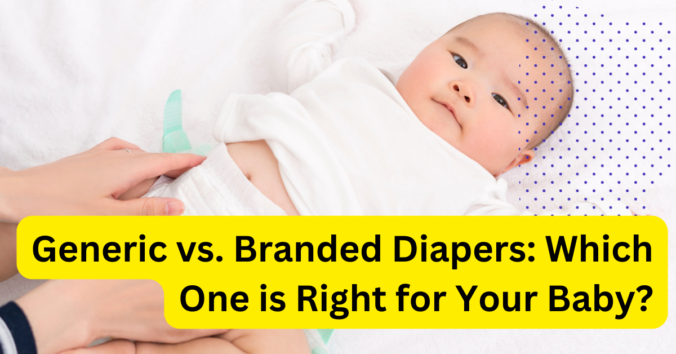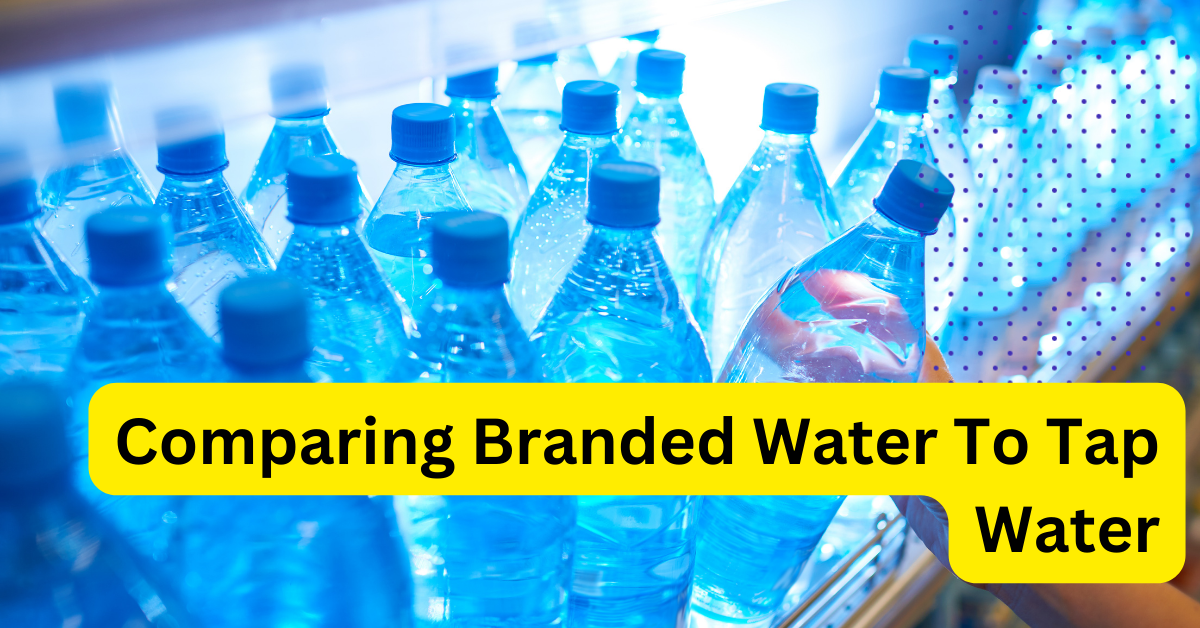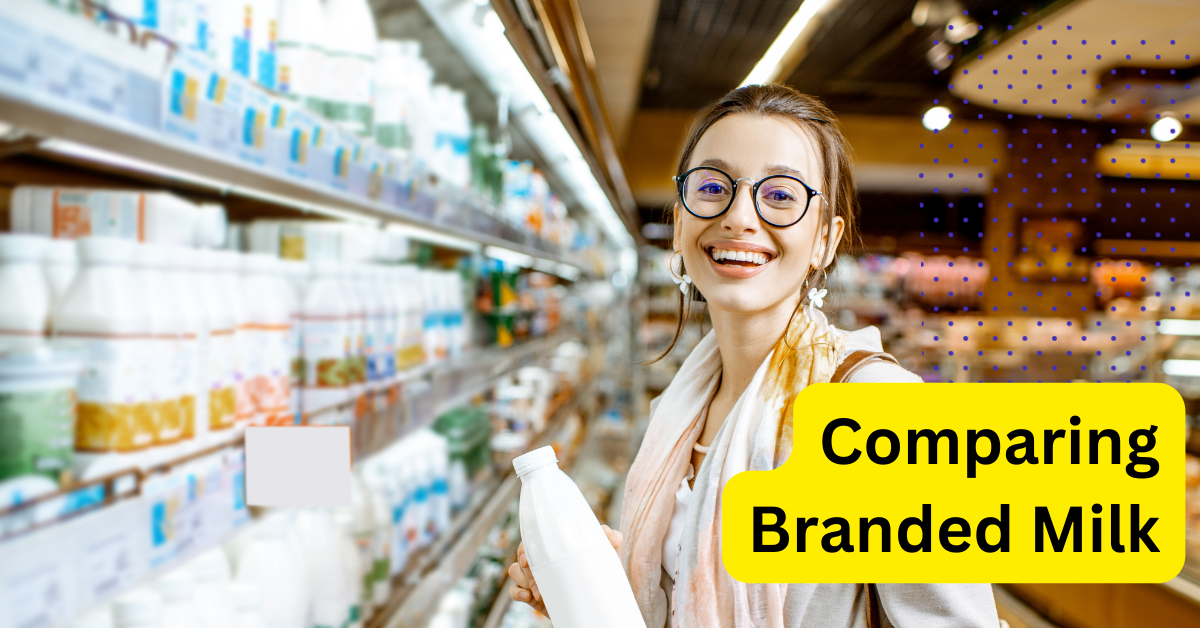Are you tired of paying premium prices for branded diapers only to find that they don’t fully meet your needs?
Do you want to save money while still ensuring the health and safety of your baby?
I’m here to break down the differences between branded and generic diapers, so you can make an informed decision on which option is best for you and your pocket.
Parents often assume that brand name means better quality. But when it comes to comparing branded diapers against their generic alternatives, there are important factors to consider beyond price. From absorbency and comfort levels to safety and environmental impact, this article will go over all the pros and cons of both options so you can make an educated choice for your baby’s health.
Definition Of Brand Name And Generic Diapers
Brand-name diapers are those produced by a specific manufacturer and carry its label. These products usually cost more than generic diapers but come with certain quality assurances.
Generic diapers are typically made by an unknown manufacturer without the label of a particular brand. They may be less expensive, but there is no guarantee about their quality or safety.
When comparing branded to generic diapers, it’s important to consider both price and quality. Both factors must be taken into account when deciding which type of diaper offers the most value for money.
Cost Analysis
Regarding cost, it’s a no-brainer that generic diapers are the way to go. They are much cheaper than their branded counterparts.
Let’s take a look at the numbers:
- The average cost per diaper for generic brands is 10 cents, while branded diapers cost 20 cents on average.
- Generic diapers offer a 50% discount compared to their branded counterparts.
- If you’re buying a large box of diapers with 200 pieces in them, you’d be looking at saving up to $20 per box!
Quality Comparison
Having established the differences in cost between branded and generic diapers, it is now necessary to compare the quality of each. To begin with, branded diapers are usually made from higher-grade materials that are softer, thicker, and more absorbent than their generic counterparts.
This means that they can better contain leaks, as well as provide a greater level of comfort for the wearer. Furthermore, branded diapers often come with added features such as wetness indicators and elastic waistbands which help to make them easier to use and even more comfortable.
Generic diapers still provide adequate protection against leaks and are a viable option for those on a budget. Ultimately, it comes down to personal preference when choosing between branded and generic diapers in terms of quality.
If you want something more luxurious then the branded option may be preferable, but if you’re looking for an economical alternative, then going with generic might be the best choice.
Absorbency Ratings
When it comes to absorbency ratings, there’s not much difference between branded and generic diapers. Both types typically use the same type of materials, such as polymers, cellulose, and sodium polyacrylate. The primary difference lies in the design and construction of the diaper. Branded diapers often feature multiple layers and a patented absorbent core that helps draw moisture away and lock it in. In contrast, generic diapers may have fewer layers or no core at all.
Testing has shown that branded diapers can hold up to seven times their weight in liquid compared to generic brands holding three times their weight in liquid. This means that branded diapers offer superior absorption properties than generic ones, making them more effective for extended periods of time.
However, this doesn’t mean that generic diapers can’t be used effectively; they just may require more frequent changing than branded ones. For parents looking for maximum protection against leaks, branded diapers are likely the better choice.
Comfort Level
When it comes to comfort level, branded diapers, and their generic alternatives are as different as night and day. Perhaps, that is a slight exaggeration. However, there are differences, and the table below shows the worst-case scenario.
| Branded Diaper | Generic Alternative |
|---|---|
| Soft & Flexible | Stiff & Unyielding |
| Absorbs Quickly | Slow Absorption Rate |
| Breathable Material | Non-Breathable Material |
| Leak Protection | Frequent Leaks |
| Elastic Waistband | Not Elastic Waistband |
The results show that branded diapers offer superior comfort than their generic counterparts in terms of softness, absorption rate, breathability, and leak protection. Additionally, branded diapers come with an elastic waistband which allows for a snugger fit around the baby’s waist, providing maximum security and comfort for sensitive skin.
In comparison, generic diapers may provide non-elastic waistbands leading to a looser fit around the baby’s waist which is prone to leaks. All in all, when it comes to comfort level, branded diapers reign supreme over their generic alternatives.
Allergens And Sensitivities
When it comes to allergens and sensitivities, branded diapers and generic alternatives can have significant differences. It’s important to understand the potential risks associated with each type of diaper. Branded diapers are often more expensive, but they may also be better suited for those with allergies or sensitivities due to their higher-quality materials.
Generic diapers may not be made from the same materials, may contain ingredients that could cause allergic reactions, or may use fragrances that could irritate sensitive skin.
When deciding between branded and generic diapers, it’s important to consider any allergies or sensitivities your child might have so you can make an informed decision. If you’re on a budget, generic diapers can be a great option. But if you want the best for your baby’s skin, then it’s worth considering investing in a branded product.
Environmental Impact
Moving on from allergens and sensitivities, another important factor to consider when comparing branded diapers to their generic alternatives is the environmental impact. The way diapers are manufactured and disposed of can have a significant influence on the environment.
When it comes to manufacturing, there are a few differences between branded and generic diapers that could affect the environment:
Branded Diapers:
- Generally require more energy and resources to produce compared to generic alternatives
- Can use materials that may be considered harmful to the environment
Generic Diapers:
- Require fewer resources to produce than branded options.
- Often use materials that are generally considered safer for the environment
The disposal of diapers is also an issue when it comes to environmental impact. Branded diapers are usually harder to break down, while generic ones tend to be more biodegradable.
This means that if they’re thrown away in landfills, they’ll take longer to decompose with branded options. On the other hand, if they’re recycled properly, both types of diapers can be broken down into usable materials. Ultimately, consumers must weigh the pros and cons of each type when trying to minimize their environmental footprint.
Availability
Some may argue that branded diapers often have a wider availability than their generic counterparts. However, this is typically not the case. Generic diapers are widely available in most grocery stores and convenience stores, giving consumers a broad selection of options.
Furthermore, many generic diaper brands can also be purchased online for added convenience. Branded diapers may have slightly better availability in certain areas; however, this is not always the case, and generic alternatives should still be considered when making purchasing decisions.
Different Types Of Diapers Offered By Brands And Generics
When it comes to diapers, there are many different types that are offered by both brands and generics. In order to compare the differences between them, let’s take a look at the various types of diapers offered by each one.
| Diaper Type | Brands | Generics |
|---|---|---|
| Disposable | Most brands offer disposable diapers, which are convenient for parents since they don’t need to be washed or replaced as often. They typically come in larger packages, making them more affordable in the long run. | Generics typically offer a variety of disposable diapers, with options like cloth-like materials and hypoallergenic varieties available at a lower cost. However, they may not provide as much absorbency as the branded products. |
| Cloth Diapers | Brands usually offer cloth diapers in either pre-made or customizable sizes and materials which can be more expensive than their generic counterparts. They often come with special features such as waterproof liners or adjustable closures for a better fit. | Generics also offer cloth diapers that are usually cheaper than those from brands but may lack certain features such as adjustable closures or waterproof liners. |
Overall, when it comes to choosing between branded and generic diapers, it is important to consider the type of diaper you prefer, your budget, and the features you need for your child’s comfort and safety. Both branded and generic products have their own advantages and disadvantages that you should take into account before making your decision.
Tips For Choosing The Right Diaper
Choosing the right diaper for your baby can be a daunting task, but understanding the differences between branded and generic diapers can help you make an informed decision. When comparing diapers, there are a few factors to consider:
Comfort:
- Branded diapers often contain special features that promote comfort and breathability, such as soft linings or extra padding.
- Generic diapers may not have these features and may not provide as much comfort.
Fit:
- Branded diapers usually come in a variety of sizes tailored to fit your baby’s body type.
- Generic brands may only come in one or two sizes, which may not fit as well.
Absorbency:
- Branded diapers typically have better absorbent materials that help keep skin dry and reduce leakage.
- Generic brands may not offer the same absorbency levels and could cause skin irritation due to moisture.
Additionally, it is important to read reviews about the diaper before purchase to make sure it is suitable for your needs. Consider factors like cost-effectiveness, ease of use, sustainability, and safety when making your choice. Ultimately, choosing the right diaper for your baby comes down to personal preference and budget.
Comparison Between Different Brands
The following table gives you a rough idea of the cost per diaper and the quality of different brands of diapers, including generic and supermarket brands.
| Brand | Cost per Diaper (USD) | Quality | Insights |
|---|---|---|---|
| Pampers Swaddlers | 0.34 | High | A popular choice among new parents, Pampers Swaddlers are known for their softness and comfort. They offer up to 12 hours of leakage protection and a wetness indicator. |
| Huggies Little Snugglers | 0.32 | High | Huggies Little Snugglers are designed for a gentle and comfortable fit. They have a pocketed waistband to help prevent leaks and a wetness indicator. They also offer a hypoallergenic option. |
| Honest Company Diapers | 0.30 | High | Made with eco-friendly materials and free of latex, chlorine, and fragrances, Honest Company Diapers are gentle on sensitive skin. They have a stylish design and offer excellent absorption. |
| Bambo Nature Diapers | 0.28 | High | Environmentally-friendly and certified by several eco-labels, Bambo Nature Diapers have a breathable backsheet and wetness indicator. They’re free of harmful chemicals and perfect for babies with sensitive skin. |
| Target Up&Up Diapers | 0.15 | Medium | Target’s Up&Up Diapers are an affordable store-brand option with a soft texture and decent leak protection. They may not be as absorbent as premium brands but are a great value for the price. |
| Walmart Parent’s Choice Diapers | 0.14 | Medium | Walmart’s Parent’s Choice Diapers are a budget-friendly option that offers decent performance. They may not be as soft as premium brands but provide good leak protection and a wetness indicator for select sizes. |
| Kirkland Signature (Costco) | 0.14 | Medium-High | Costco’s Kirkland Signature Diapers are a great value option for members. They offer good leak protection, a wetness indicator, and a soft feel. They’re comparable in quality to some of the more expensive brands. |
| Amazon Mama Bear Diapers | 0.13 | Medium | Amazon’s Mama Bear Diapers are a budget-friendly option with good leak protection and a wetness indicator. They may not be as soft as premium brands, but they’re an affordable choice for families on a budget. |
| Aldi Little Journey Diapers | 0.12 | Medium | Aldi’s Little Journey Diapers are an affordable store-brand option with good leak protection and a wetness indicator. They may not be as soft or as absorbent as premium brands but are a cost-effective choice for families on a budget. |
As a consumer product comparative analyst, I can confidently say that there are pros and cons to both branded and generic diapers. While branded diapers may be more expensive, they often offer extra features such as comfort, absorbency ratings, and environmental friendliness. On the other hand, generic diapers are typically cheaper, but they may not have all of the features that you get with a name-brand diaper.
At the end of the day, it really comes down to what is most important for you and your baby when you’re making your decision. As the old adage goes, “you get what you pay for”; while buying generic can save money in the short term, it may not be worth sacrificing comfort or quality.
So take some time to do your research and make sure you find the perfect diaper for you and your baby!



